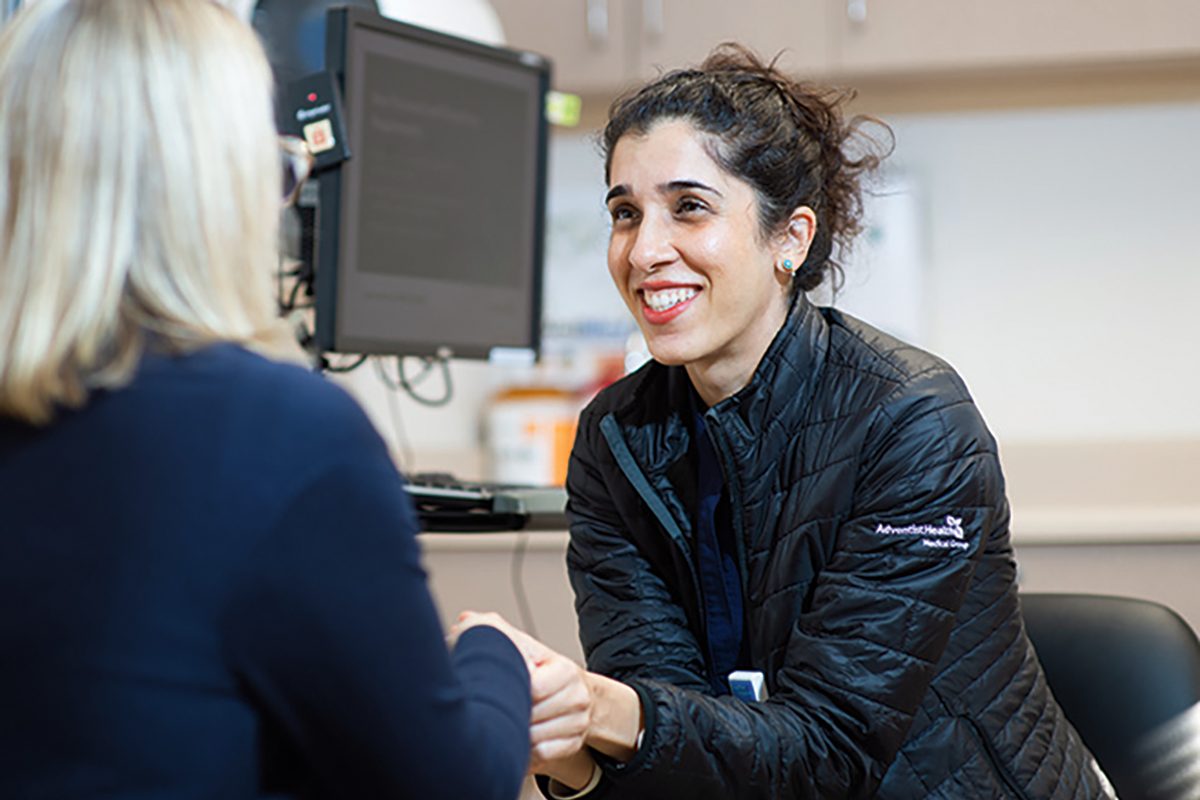Health & Wellness
Rethinking pain relief

Ariana Abid, MD, helps people find other solutions for managing pain.
Early in her medical career, Ariana Abid, MD, saw something she will never forget: a man going through opioid withdrawals in the hospital. He had become dependent on the drug, and as his body reacted to the absence of it in his system, “he was so uncomfortable, he looked like he was being tortured,” she recalls.
The experience shaped Dr. Abid’s career and drove her to help people move away from a one-size-fits-all approach to opioids and instead find sustainable ways to manage chronic pain. She shares how she’s doing that as an addiction medicine and complex pain management physician for Adventist Health Sonora.
Growing dependence
For years, prescription medications called opioids have been offered to medicate pain after surgery or injuries, or for long-term complaints like low back pain, arthritis and even poor sleep. But Dr. Abid says that taking these medications for too long can be counter-effective, even at low doses.
“While opioids are very powerful, the body can get used to them very quickly,” she says, meaning that a person might need a higher dosage to achieve the same level of pain relief the longer they take the medication. If they don’t continue taking the drug, they may experience cravings or withdrawal symptoms such as shakiness, chills, nausea or severe pain.
Research from the last decade shows that opioid use, even short term, can have significant health risks. People who use opioids are at higher risk for dementia, mood disorders, heart attacks, problems with sexual function and unintentional overdose. Taking them with other substances such as alcohol or sedating medications is even deadlier. Long-term use or a high dosage can increase sensitivity to pain, a condition known as opioid-induced hyperalgesia. A study of people with opioid dependence found that it reduced life expectancy by 15 years.
A new approach
While opioids can be useful for severe, short-term situations, Dr. Abid says there may be a better way to manage pain, especially for long-term needs. “Pain is complex, meaning there are multiple things that contribute to it,” Dr. Abid explains. “So, treatment should be holistic, too.”
Dr. Abid says that chronic pain syndromes are typically caused by an overlap of neurological and psychological injuries. It is important to understand how these issues affect the individual and then treat them accordingly.
She and her team offer a dynamic approach that includes education, psychological therapy techniques, nutrition, exercise and replacement of high-risk medications with safer options. In some cases, they may refer people for more traditional interventional pain management such as injections or surgery.
Custom treatment
Dr. Abid and her team work with each patient to create a custom approach. “Pain management must be highly individualized,” she says. “It requires listening to the person, understanding their history and lifestyle, and finding solutions to fit.”
This means that if a person has high stress or post-traumatic stress disorder, Dr. Abid may recommend cognitive therapy or mindfulness-based approaches. For an individual who is mostly sedentary, she suggests starting small with easy movement outdoors, where sunlight and fresh air can also boost the pain-regulating hormone serotonin.
“Living with chronic pain can be very disempowering,” Dr. Abid says. “I hope our approach can empower people to know themselves more as a person, better understand their bodies, be healthier and feel better.”


